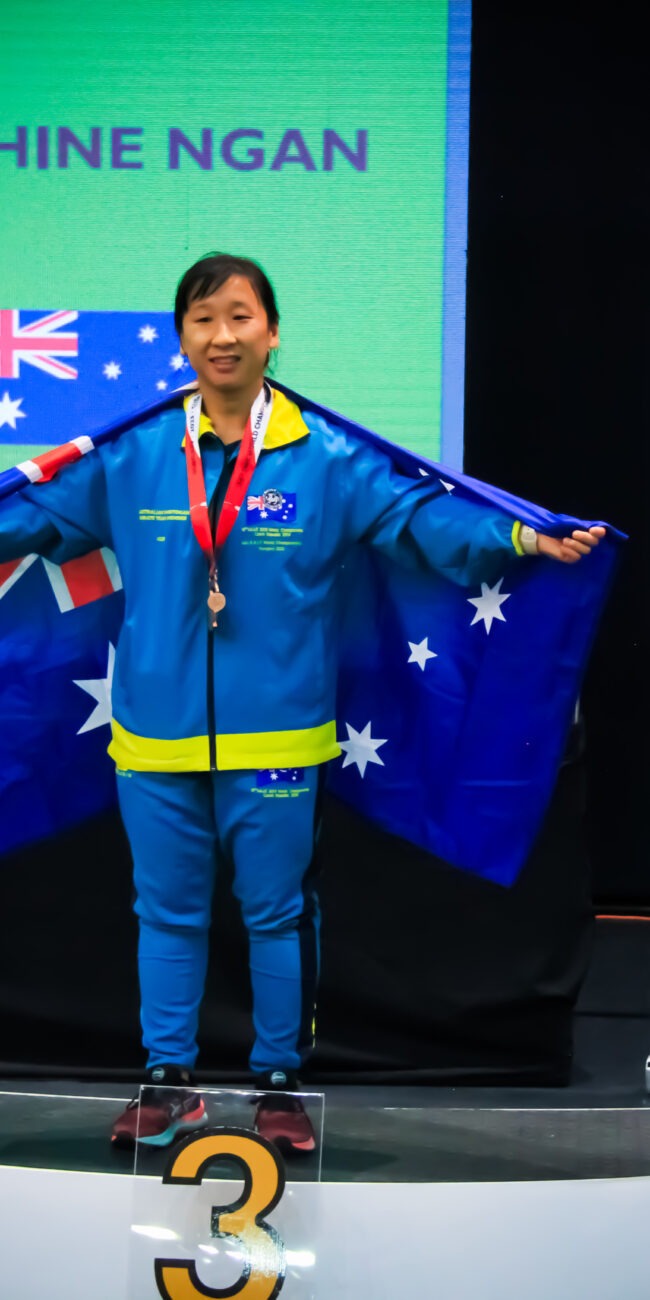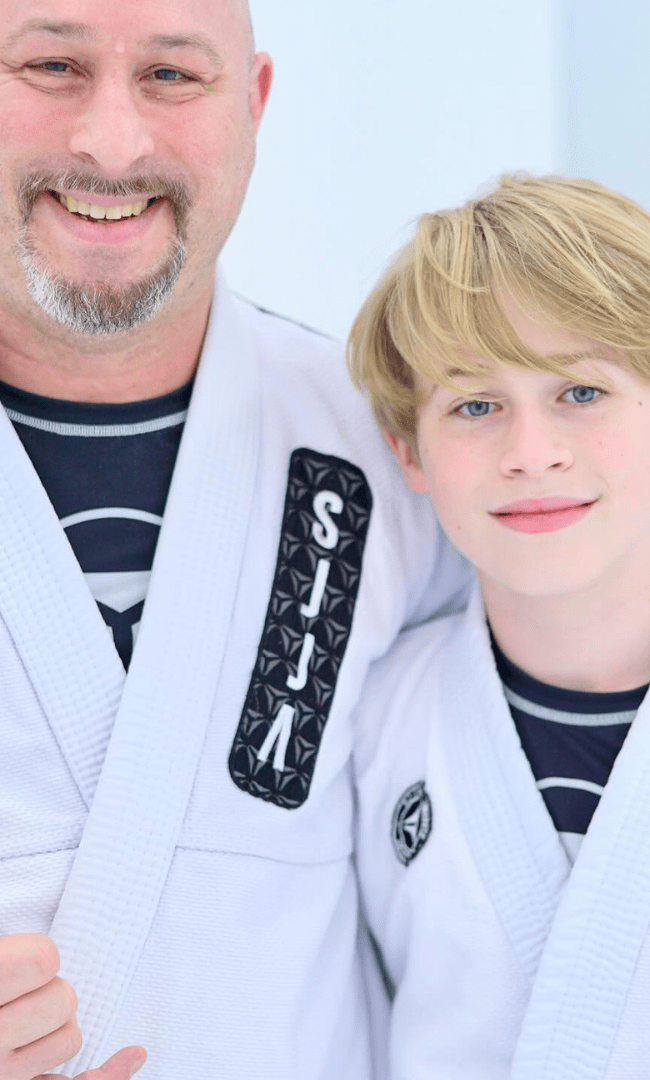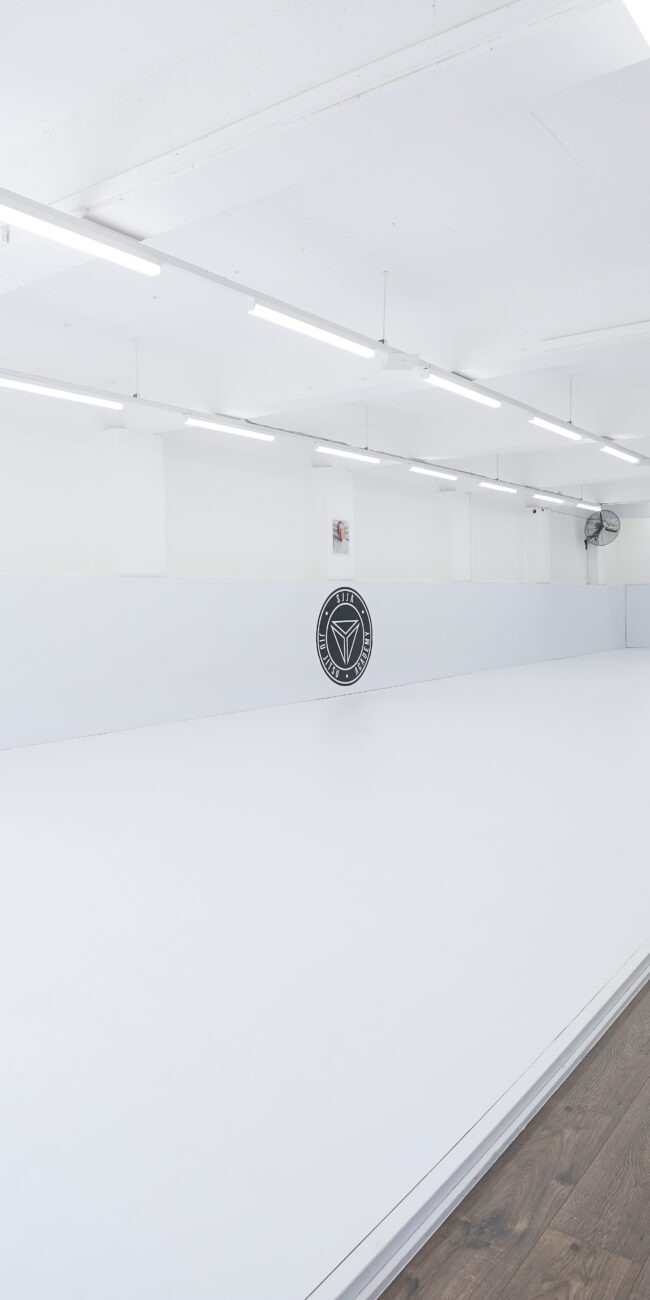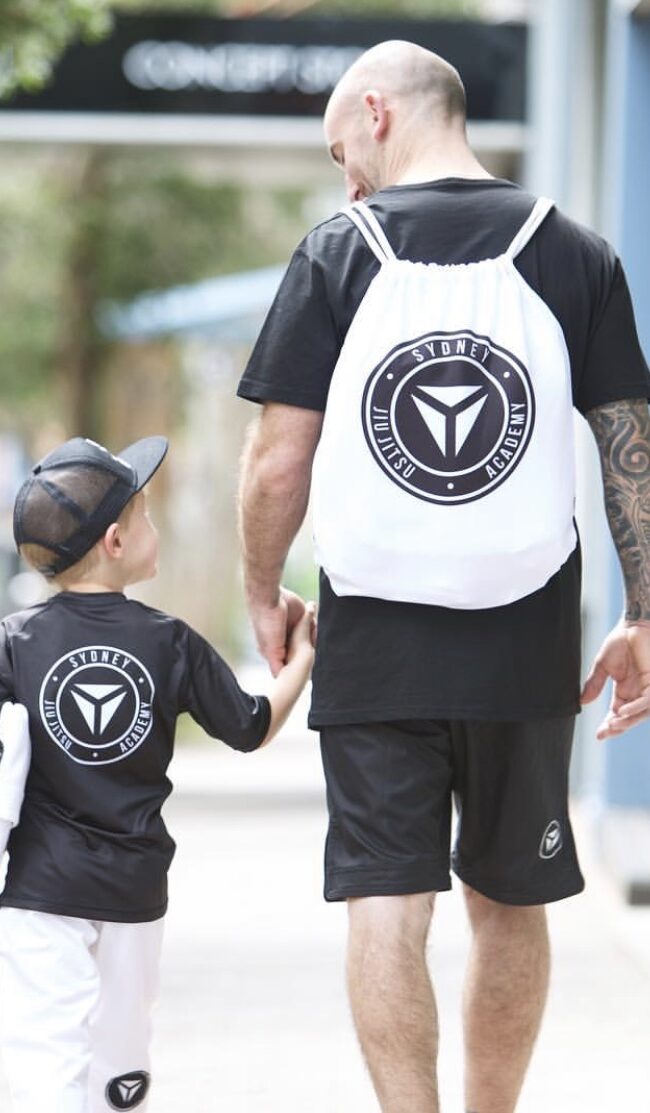
In this month’s blog, we interviewed sjja’s higher belts and asked them to walk us through their personal jiu jitsu journeys, including the evolution of their mindset from white belt to black belt, and how they overcame the common mental and physical hurdles of each belt level.
MEET OUR INTERVIEWEES:
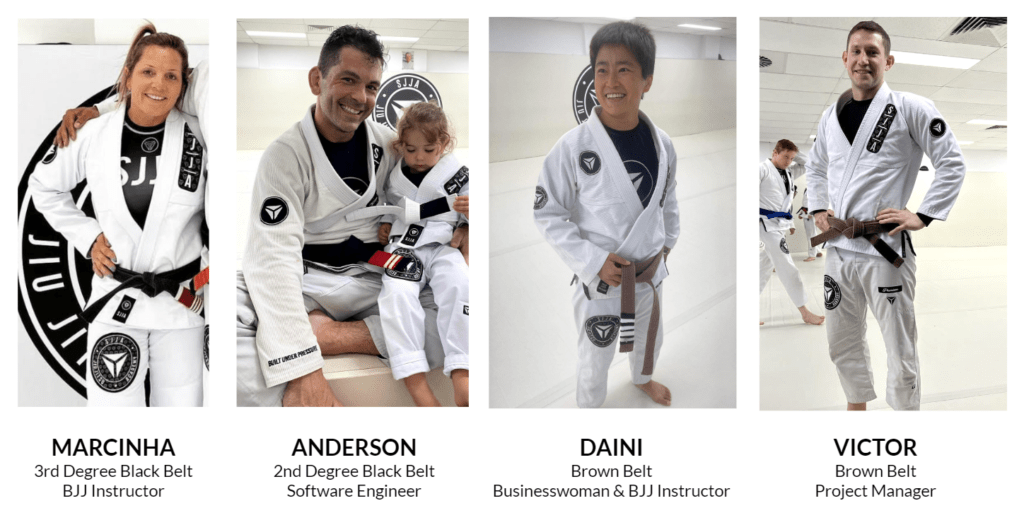
Tell us a little bit about yourself: Where are you from, what are your hobbies and what do you do for a living?
Daini: I’m originally from China. I work in a corporate job; specifically, in the system implementation of ERP systems, and jiu jitsu is obviously my main hobby. I’ve had lots of different hobbies throughout my life, but it’s always been a sport. In high school I played a lot of football and basketball, trained Muay Thai, and cycled. It wasn’t very common to have formal sports teams in China when I was in high school, so most of the time we just played on the field by ourselves. It was always me playing sports with all the boys – I was always the only girl on the field.
Anderson: I was born in the South of Brazil where I lived until I was 20 years old when I received a job opportunity to move to Portugal to work in their biggest national banks as a Software Engineer. Software Engineering is my career but I live for my daughters. That is what motivates me and the reason I wake up happy every day. I work and train only when I’m sure my daughters don’t need my attention or when they are sleeping or in childcare. For many years I said I didn’t have any hobbies, but that is because everything I do is done with a purpose. The few things I do when I’m not working are training BJJ and activities related to improving my BJJ, like CrossFit or running. I like to read books mostly related to software engineering or self-improvement. I also like to take photos. I worked for a few years in Portugal in my photography studio before moving to Australia. This is my hobby nowadays. I like to explore my creativity in landscape, cityscape or photography with models.
Marcinha: I’m from Santa Catarina in southern Brazil – and I only arrived in Australia 15 days ago! I’m so happy to be here in Australia. I lived in Dubai for 5 years, and then lived in Bali for 5 months before moving to Australia. Prior to training jiu-jitsu, I used to do a lot of bodybuilding.
Victor: I’m originally from Russia, but moved to Australia for my university studies, and I’ve lived here ever since. I’m currently a project manager in an industrial design company, and jiu jitsu is my main hobby.
what made you want to start training jiu jitsu?
Victor: When I was in high school, I did a bit of martial arts. My first martial art was kickboxing and I also did some freestyle/hip-hop style dancing for a year or two. When I came to Australia I tried capoeira and boxing, but I quit after a few months. I actually tried BJJ as well, but didn’t stick with it because the gym wasn’t quite right for me. They weren’t very friendly with the beginners; They taught you a few things, but they would force all the fresh white belts to do the sparring classes with all the higher belts without really knowing any techniques or understanding the fundamentals, and as you can imagine, it’s intimidating enough as a white belt if you’ve never done any wrestling or sparring before. So that kind of put me off it.
Then in 2013, my roommate found a BJJ gym nearby (which was Bruno’s), and asked if I wanted to come along. I decided to go with him, and had a very different – i.e. much more positive – experience this time around. It was also great having a roommate who trained as well, because on those days where one of us didn’t feel super motivated to train, we’d motivate each other and both end up showing up to the gym together.
Marcinha: I was training Muay Thai at the time in a gym that also had jiu-jitsu. One day, I walked past the jiu jitsu graduation ceremony, and I saw a woman graduate with a blue belt, and noticed she was the only woman on the mat, in amongst a sea of men. I was dazzled, and when I saw that, I wanted that for myself too. So I enrolled in jiu-jitsu at 27 years of age. I instantly fell in love with the “gentle art”, and after 3 months of training, I started competing.
Daini: I was living in Hong Kong at the time, and had been training Muay Thai and boxing for about three years, when my friend with whom I trained Muay Thai said I should give jiu jitsu a try. So I joined a gym that had everything: CrossFit, Muay Thai, jiu jitsu, and yoga, and we had five Brazilian black belts in that gym, so at the time, it was the gym with the highest level of jiu jitsu in Hong Kong.
Anderson: I had been training capoeira since I was 14 years of age, but when I was 20, my brother and I moved to Portugal for work, and we started training BJJ together. At that time, as a new immigrant with no family and no friends in a new country, I found in him all the family support that we had left behind in Brazil. That was super important and made me and my brother very close.
Looking back at your jiu jitsu journey, can you talk to us about your mindset throughout various belt phASES?
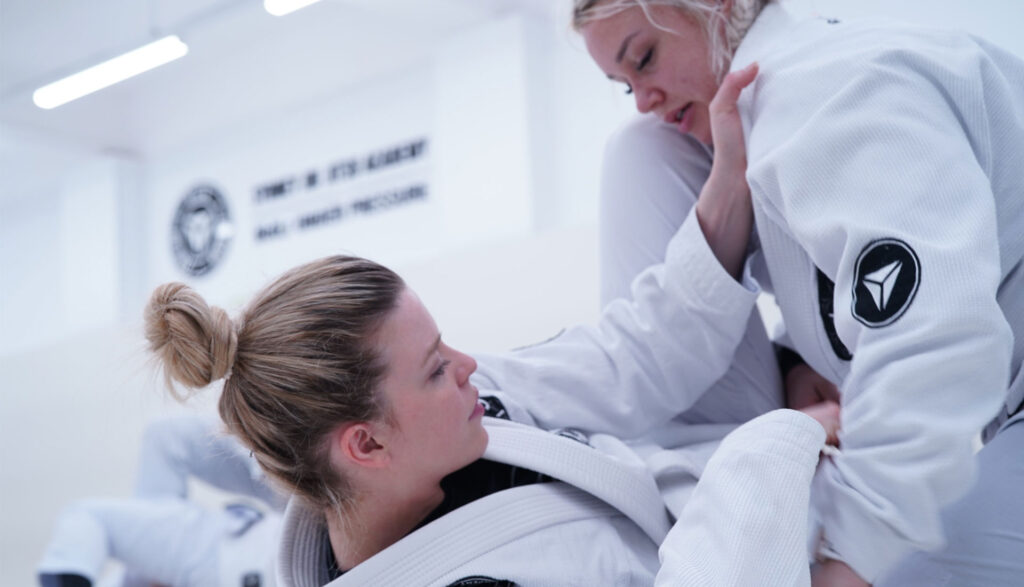
the white belt phase
Daini: I was lucky because when I started my BJJ journey, it was at the same time as a bunch of other girls, so we were training partners throughout the entire white belt and blue belt stage. My white belt journey was really fun; together we really just focused on getting the fundamentals right. Also, because it was a new gym, most people were at the white belt level, so there was no serious technique domination that you get when sparring with higher belts. It was a really healthy environment and it was nice that we were all on the same journey at the same time. I also used to do a lot of solo training. I would Google all the solo drills I could possibly do, and would always practise them before class or during my spare time, which helped a lot. Also, I remember how excited we’d all get whenever we received a new stripe on our white belt.
Marcinha: When I first started, I remember sparring with the higher belts and feeling like I was dying, because I knew nothing. As a white belt, it was so hard to understand all the positions, and I definitely felt overwhelmed a lot of the time. But I knew that this is normal – I just kept telling myself to never give up. Every night when falling asleep, I closed my eyes and would think about all the positions I learned that day. My goal was to get my blue belt, and every single day I would keep saying to myself “just keep going – keep training every day and you’ll get your blue belt soon enough.”
Victor: I remember looking at all the blue and purple belts, watching them roll and think, “wow – these guys are so cool and are so good! I really hope one day, I’ll be at that level”. So my mindset back then was just to focus on learning as much as I could in order to be as comfortable as I could on the mats. I also remember how nice it was to be in a martial arts community – I felt like I was part of something, and I remember thinking “oh wow, I train martial arts now – this is so cool.”
Anderson: I started competing about a month into my jiu jitsu journey. My mindset during the competitions was just following the simple and basic fundamentals, trying not to invent anything and just doing whatever my coach told me to do. After four months I did another competition and ended up with double gold and my professor promoted me to blue belt after that, which I didn’t expect.
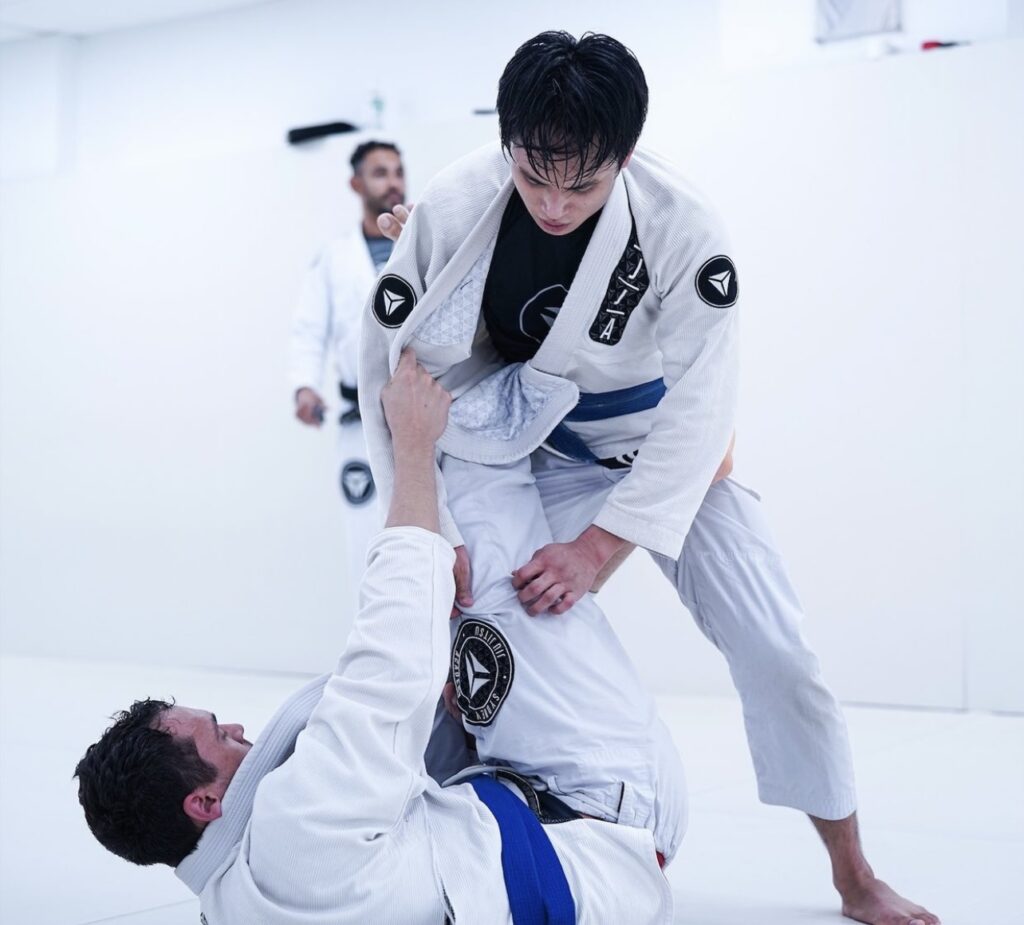
the blue belt phase
Daini: There are a lot of frustrations that commence at the blue belt level. I felt like I was always getting caught out with the same technique, or losing to the same person over and over, and feeling like I could never get beyond that. I remember half way through my blue belt journey, I started thinking “I suck at jiu jitsu… I’m so bad at it… I don’t want to do it anymore,” but the next day I still forced myself to show up to training. The truth was, I was just reacting and scrambling a lot, but there was very little strategy or planning behind anything I was doing.
Our coaches in Hong Kong were great, and taught very good techniques, but they were not small. You were training with giants, which meant you had to overcome all of these strength and size problems. It’s also important to note that it’s impossible to take everything in, because the classes are catered to everyone, but the reality is we each have different body types and different strengths and weaknesses, so sometimes the game for someone who’s tall is really hard for me. So I started watching different instructionals and found Marcelo Garcia’s game had a lot of things I could take. He’s in a similar situation to me in that he’s short, with short limbs. He can’t do a deep de la riva, for example. So his game is very adaptable to me, and my training partner and I would drill a lot of his techniques in our spare time, because the classes in Hong Kong wouldn’t teach you these types of guards. The truth is, if you want to get considerably better, you have to do your own homework – you can’t just rely on classes alone. I found that as soon as I started doing my own training and watching instructionals, I got so much better and really started to find my game.
Victor: when you get promoted to blue belt, it feels real. It’s like “I’m actually doing it now: – my trainer sees I’m doing better, which motivates me to train more and learn more. Blue belt is very much the exploration phase. You think you know something, but really, you just learn the basics of it as a blue belt and start to explore it a lot more.
Marcinha: A few months after I received my blue belt, I broke my ankle sparring with very heavy big guys. They would all fight so hard against me – I think because no man wants to give up against a woman – and it ended up being a pretty serious injury because I had to have surgery and put screws in my ankle. I spent 8 months on crutches, but I still went to the mat every single day just to watch the classes. After all this happened, I started training even more: I trained in the morning and at night – 2 times a day, and it was because of that, I really felt my jiu jitsu grew a lot during this time. I then signed up for a “South American Championship and won the championship for my weight category.
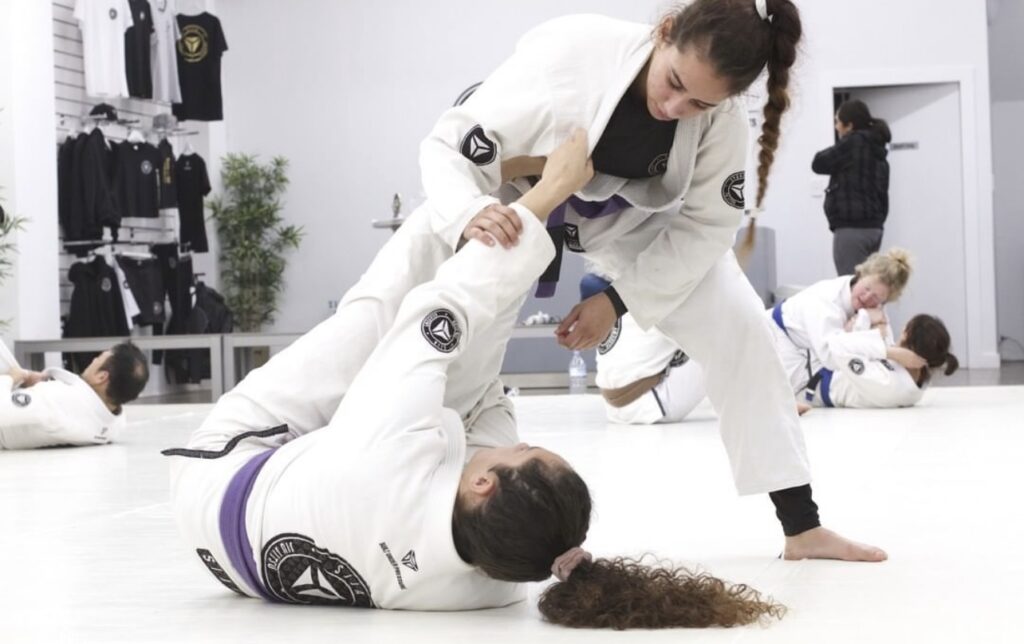
THE PURPLE BELT PHASE
Anderson: This was a nightmare. It started with my first competition with my new belt, when I faced a new guy in town who smashed me within seconds. Five years ago, I discovered this guy was Bruno Alves. When I received my purple belt, I didn’t realise how big the big gap is between blue and purple, and I was expecting to have a quick and smooth tradition, but Bruno showed me that it was not that easy. The beating he gave me changed my perception of BJJ and made me rethink my abilities. Also, I spent 6 years on this belt, training 2 times a day. Some people said it was too much to be in the same belt for 6 years, but nowadays as a black belt, I understand why (part of that was because of my belt history – I moved through white and blue very quickly). With a purple belt I started to change a lot of things. People become more knowledgeable and dedicate more time to it. A lot of basic positions stop working here, because people already have a very good understanding of the techniques. Took me all this time to have the correct mindset for a purple belt. The purple belt is where the warrior soul must grow inside of us.
Marcinha: As a purple belt, I started going to jiu jitsu every day because it was helping my mind. I was a single mum raising my daughter, and I was working so hard every day to pay my bills and provide for my daughter, but I made sure I went to jiu jitsu every day, because it really helped my mind. Jiu jitsu was very much like therapy for me during this time.
Daini: I got my purple belt right before I moved to Australia. So it was a new gym and a new environment, but I found two girls who were my size that I could drill with outside of class. At the purple belt stage, I extended my range of techniques a lot more, and stopped constantly reverting to X-guard, for example. I started to look at different things I suck at (such as guard retention) because I like to play top, and worked on making my weaknesses a lot better. I also started to have a more playful mindset, and I stopped caring about the belt. It wasn’t about getting to brown or black belt anymore, I just really wanted to focus on having more techniques under my belt, so that I have more things to work with when I’m rolling.
By the time I reached purple belt, I realised I don’t have anything to prove; I don’t mind being tapped, I just want to have more things going on when I am rolling rather than getting stuck in a position or stalling, which would have no benefit to me. I also started to be more selective – i.e. avoiding the big guys and the ‘spazzy’ guys – not only for safety reasons, but also because it sometimes gets boring rolling with them, because I end up just using my strength to overpower them, which doesn’t help me develop my jiu jitsu. I just wanted to focus on doing things that help me train bjj for the long term, which means training smart, and training in a way that helps me practise my technique, rather than ‘to win the fight for the sake of it’.
Victor: When I got my purple belt I felt like “yeah ok, if I’ve made it to purple, I can safely say I know jiu jitsu now. When you get to purple, you really start to understand your game, and understand what works for you and what doesn’t, and you build and explore more from there.
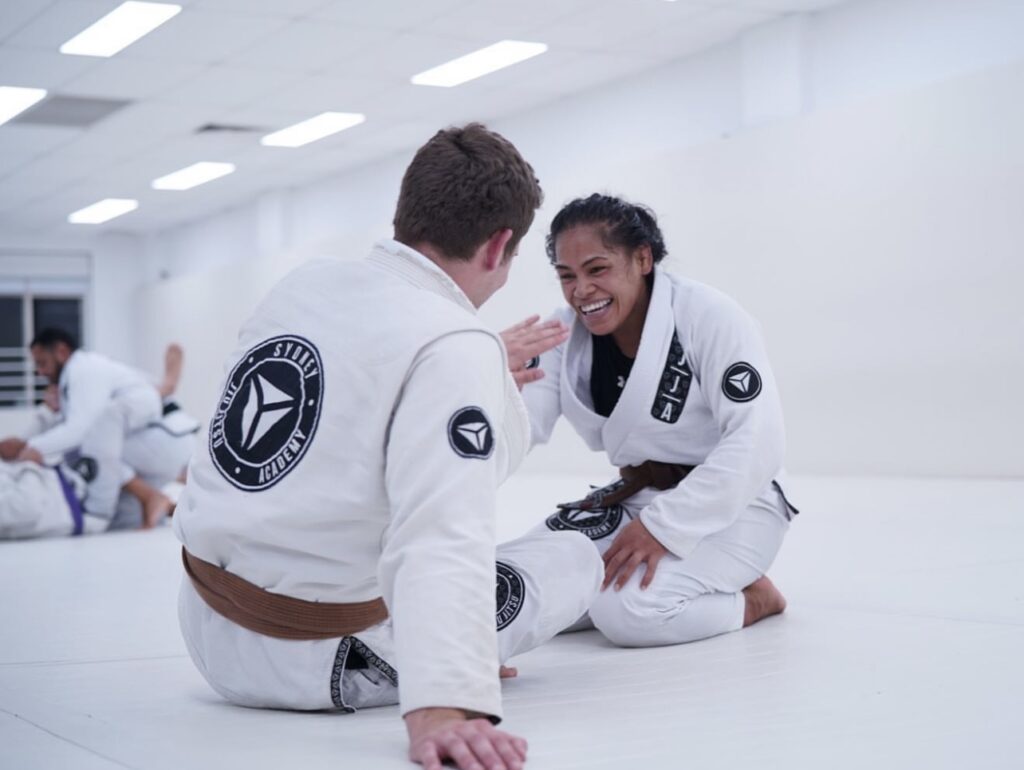
the brown belt phase
Victor: When I got my brown belt, it was so unexpected, and I definitely felt like I was not ready for it. I got it randomly at the end of a class. Bruno saw me sparring with another brown belt and I almost beat him, and out of nowhere, he said, “that’s it, come here – here’s your brown belt.” (See picture below from that day).
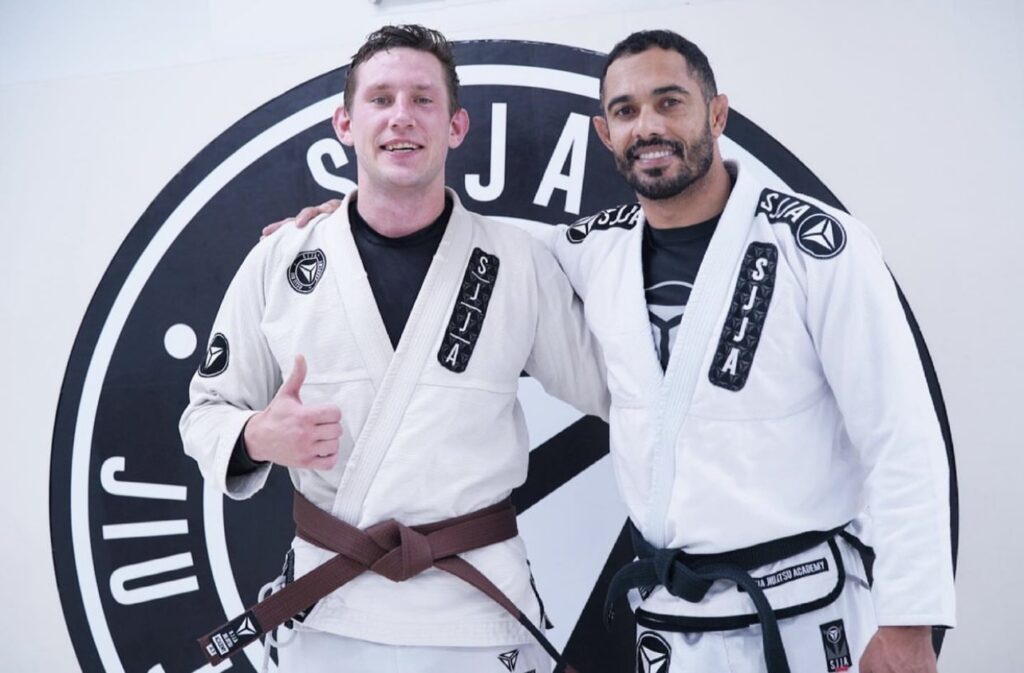
It felt heavy…. and very uncomfortable, because I remember being a white belt and seeing the brown belts thinking “woah, these guys must know A LOT. They have been training a lot and they look tough and strong, and if I ever got a chance to roll with them they would completely destroy me.” So receiving one a few years later really made me question, “am I really at that level now?” It just felt scary. But you don’t realise through the years that you are actually at that level. The fear is a bit of everything: it’s a responsibility as well, because you feel like you can’t do stupid things anymore. You feel like you can’t let white belts and blue belts beat you any more, so there’s a bit of ego that comes with it, but the bigger thing is that people are looking up to you, and you help other people and what if they come and ask me something and you don’t know, or someone challenges me and i can’t beat them.
Daini: This is when I started teaching, which really helped with my jiu jitsu, because when you start teaching it’s like you’re revising your existing skill set. Also, when students ask a question it’s really valuable, because maybe I didn’t mention something specifically, and it’s only when a student starts asking questions about it, am I able to better connect the movements, and then I realise for myself exactly what I did.
Also, when I was a lower belt, some of my professors spent time doing open mats with us and answering questions, which was really beneficial for my development. So I also want to help out my students as much as I can with those details, because in a regular class, you can see the overview of a technique, but you don’t know the details until you spar.

Marcinha: When I was a 4 stripe brown belt, I competed in the national Brazilian championship and won both my category and the absolute division. This competition was such a huge moment for me, and marked a really important milestone in my brown belt journey. Also, after I won this competition, my goal completely shifted to wanting to put more girls on the mat, rather than focus on competing.
Anderson: As a brown belt we are so close to the beginning (yes, the Black belt is the start and not the end). By the time I got my brown belt, I’d matured a bit more, understood what was needed to progress, and had adopted the correct mindset to never give up. I was training two times a day and competing in every single competition. My dedication and focus had ramped up to 100% by this stage.
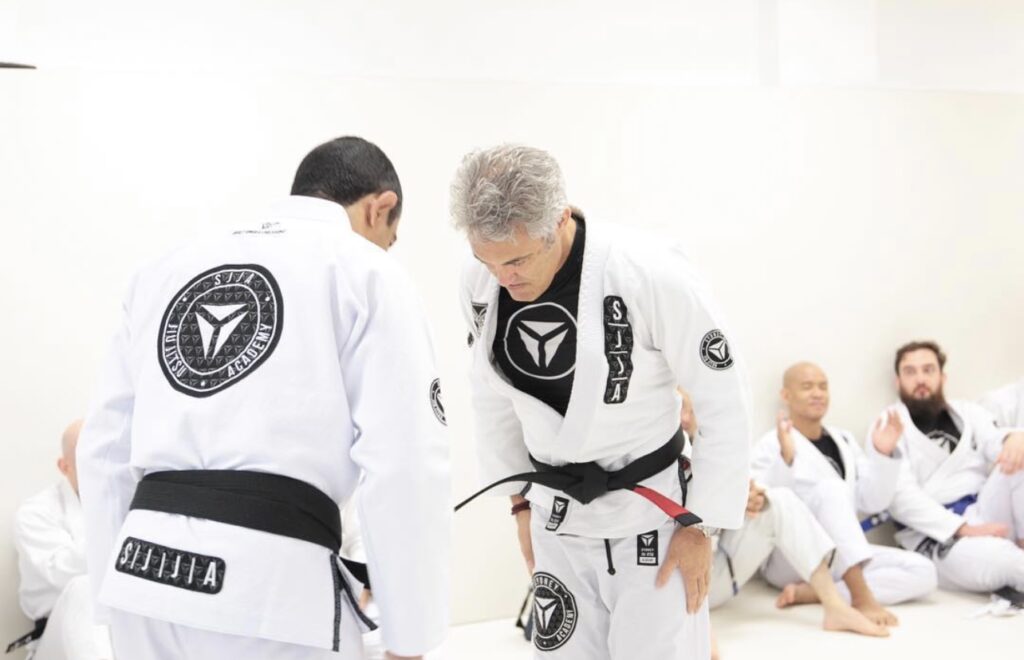
THE BLACK BELT PHASE
Anderson: The black belt is where we start to learn BJJ. Everything we did before that was only to be ready for this journey. Also, the black belt is the worst belt ever, because there is no excuse for a black belt – no one looks at a black belt and expects a bad day, an injury or something else. A black belt needs to be ready for everything, every day. It is hard for a non-black belt to understand all the responsibilities that exist in a single belt colour.
Marcinha: I remember the day I got my black belt – I felt like “I am starting again – this just became the beginning again.” Even as a black belt, you learn every single day – whether you’re training with white belts, with brown belts, or with kids. You just constantly learn more and more.
We hope that hearing from some of our black belts and brown belts gives you some comfort and extra motivation, knowing that feelings you’re having at whatever stage you’re at in your journey are completely normal, and that everyone goes through the same feeling.
Talk to our higher belts to hear more about their journey. Keep going. Motivate each other. Push through, and most importantly, don’t give up.
NOTHING WORTH DOING COMES EASY.
— Theodore Roosevelt


